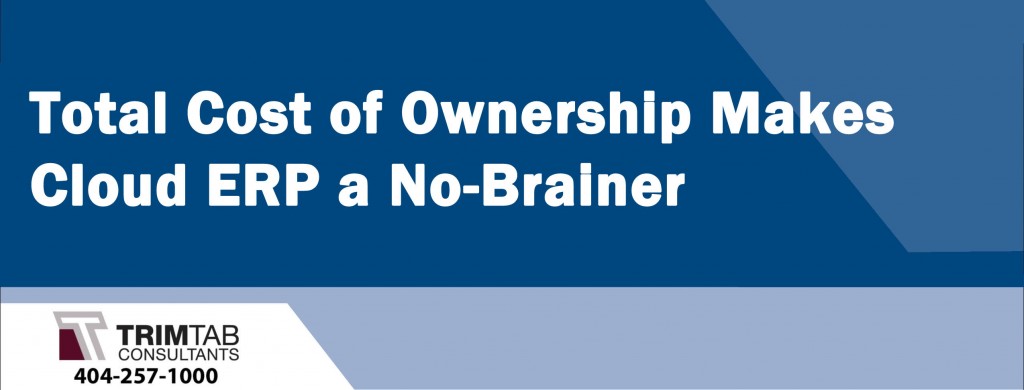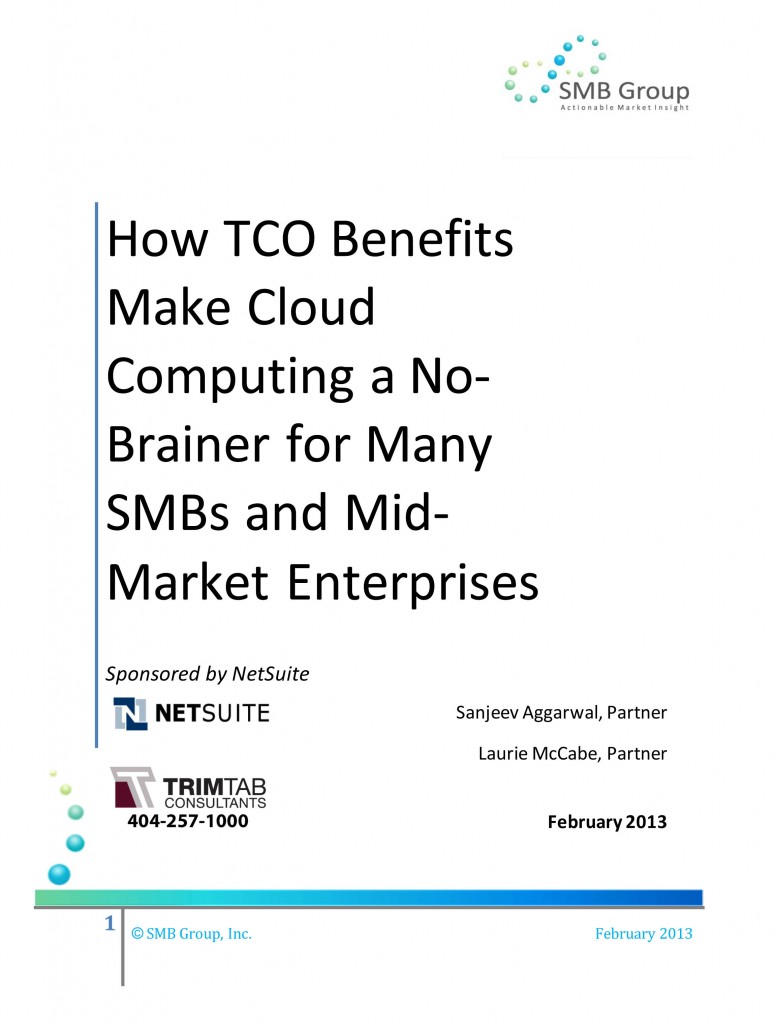Cloud computing eliminates the need for individual companies to buy, deploy and maintain IT infrastructure or application software. In the cloud computing model (also known as software-as-aservice, or SaaS), the vendor takes responsibility for deploying and managing the infrastructure (servers, operating system software, databases, data center space, network access, power and cooling, etc.) and processes (infrastructure patches/upgrades, application patches/upgrades, backups, etc.) required to run and manage the full solution. Because cloud vendors manage all of their customers on a single instance of the software, they can amortize infrastructure-related costs over thousands of customers. This results in substantial economies of scale and skill, reducing the total cost of ownership (TCO) for customers who deploy business management solutions.
We analyzed the economic benefits of the cloud model in the ERP and CRM space by comparing the TCO of NetSuite’s SaaS-based ERP and CRM solution with that of on-premises solutions from vendors such as Microsoft Dynamics, Sage and Infor. Key findings include the following:
- The overall TCO for NetSuite’s ERP and CRM cloud solution is as much as 46% less over four years for a 100-user implementation than comparable on-premises mid-market ERP and CRM solutions.
- Cloud solution cost advantages are significant across all deployment sizes we evaluated, but taper somewhat as the number of users increases: For 50 users (23 ERP and CRM users, and 49 CRM users), NetSuite’s TCO is 51% less than TCO for on-premises solutions. For deployments with 200 users (48 ERP and CRM users, and 185 CRM users), the TCO advantage declines to 31% for NetSuite’s cloud offering.
- Application software costs (subscription and support fees) account for roughly 85% of the total solution cost in the cloud model (Figure 1). In the on-premises model, application software costs (including the upfront license fees and annual maintenance fees) constitute just 23% of the total solution cost.
- Customers do not incur any direct IT infrastructure and related management costs with the cloud model because subscription fees encompass these costs. In the on-premises ERP and CRM deployments, IT infrastructure (hardware, software, maintenance and ongoing management of the infrastructure) costs range from 51% (for the 50-user scenario) to 45% (for the 200-user scenario) of the total solution cost over four years (Figure 6). This category accounts for the biggest difference between the TCOs of the two models

